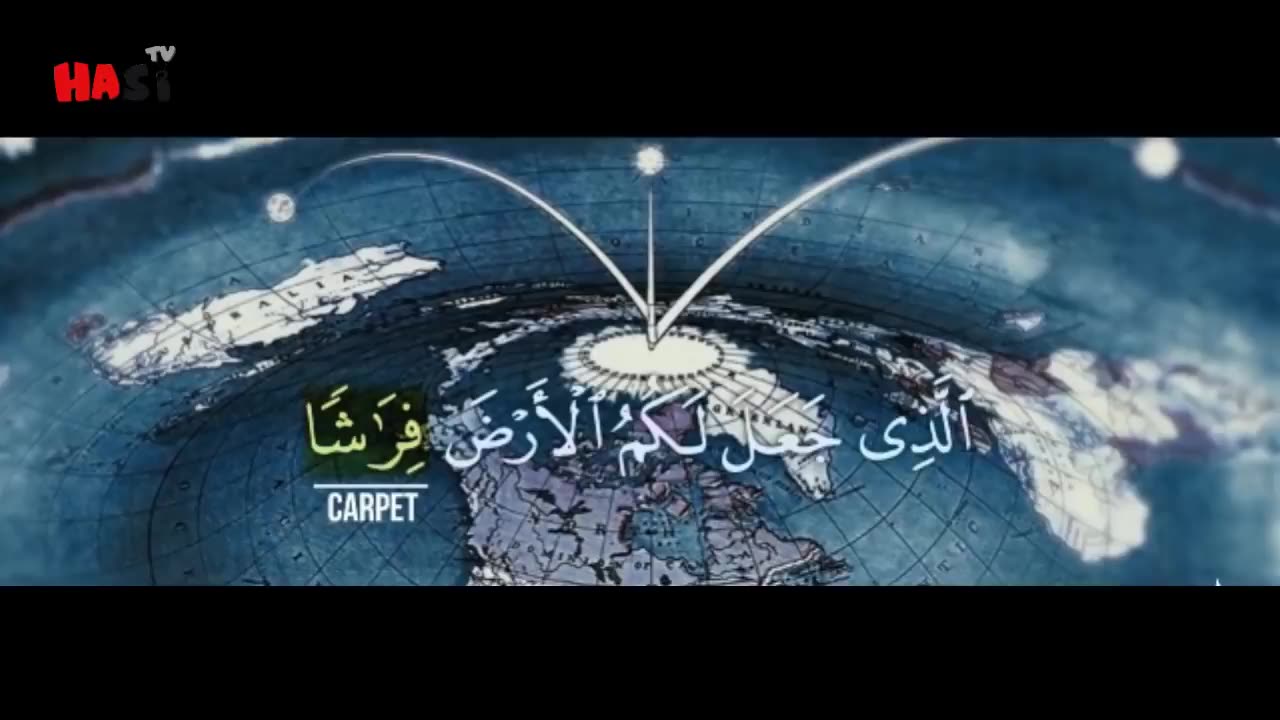Premium Only Content

Real Shape Of Earth According To Quran And Science Urdu/Hindi
The shape of the Earth has been a subject of interest from both religious and scientific perspectives. The Quran and modern science offer insights into this topic, and while they may use different language and contexts, they both contribute to our understanding of the Earth's shape.
Quranic Perspective:
The Quran, the holy scripture of Islam, does not explicitly mention the shape of the Earth in the way that modern science describes it. However, there are verses that can be interpreted to suggest a spherical Earth.
One verse that is often cited is from Surah Az-Zumar (39:5):
"He created the heavens and the earth in truth and formed you and perfected your forms; and to Him is the [final] destination."
The Arabic word "dahaha" used in this verse can be translated as "flattened" or "spread out." Some scholars interpret this as an indication of the Earth's expansive nature, rather than its exact shape. Another verse from Surah Al-Nazi'at (79:30) uses the word "egg-shaped" (dahaha) to describe the Earth. This can be interpreted metaphorically, suggesting a general roundness, but not necessarily in a strict scientific sense.
Scientific Perspective:
Modern science has established that the Earth is an oblate spheroid, which means it is mostly spherical but slightly flattened at the poles and slightly bulging at the equator due to its rotation. This understanding is supported by various scientific observations and measurements, including satellite imagery, global positioning systems (GPS), and observations of Earth's curvature from space.
The concept of the Earth's roundness gained prominence in scientific circles during the time of ancient Greek philosophers and astronomers. In subsequent centuries, the understanding of the Earth's shape has been refined through advancements in astronomy, navigation, and space exploration.
Harmony Between Quran and Science:
While the Quran does not explicitly state the Earth's shape in scientific terms, it does emphasize the signs of creation in the natural world, encouraging believers to reflect and seek knowledge. The relationship between the Quran and science is not one of contradiction, but rather of seeking deeper understanding and harmony between religious teachings and empirical observations.
It's important to approach these topics with an open mind, acknowledging the limits of human language and the different perspectives of religious and scientific texts. The Quran provides spiritual guidance, while science provides empirical knowledge, and there is room for both within a comprehensive understanding of the world.
Ultimately, the Quran and science can complement each other, encouraging believers to explore the wonders of creation and the mechanisms through which the natural world operates.
-
 LIVE
LIVE
Akademiks
51 minutes agoJay Z Scores Major Win as his accuser Admits She LIED! Tory Backs Drake in War vs Kendrick Lamar?
2,500 watching -
 1:40:09
1:40:09
Glenn Greenwald
5 hours agoIran Fear-Mongering: Provoking The U.S. Into War With Tehran? The New York Times’ Predictable Rumble Hit Piece; From Mangled Puppy To Joyous Dog: Pulo’s Story | SYSTEM UPDATE SHOW #380
72.9K66 -
 4:59:33
4:59:33
Nerdrotic
6 hours ago $23.06 earnedMCU reset? It's Kraven TIME! War of the Rohirrim is BORING! | Friday Night Tights #332 RMB
83.8K22 -
 5:27:37
5:27:37
Dr Disrespect
10 hours ago🔴LIVE - DR DISRESPECT - MARVEL RIVALS - HERO OR VILLIAN?
235K68 -
 UPCOMING
UPCOMING
Man in America
8 hours agoHow Rockefeller BURIED Silver’s Miracle Healing Powers for Big Pharma Profits w/ Jeff Adam
6K -
 UPCOMING
UPCOMING
I_Came_With_Fire_Podcast
11 hours agoLive Fire (No Exercise)
4092 -
 39:56
39:56
TheTapeLibrary
10 hours ago $3.54 earnedThe Horrifying Legends of Lake Michigan
10.9K2 -
 LIVE
LIVE
Flyover Conservatives
20 hours agoEVAN BARKER | Went from Raising $50 Million for Democrat Party to Voting for Donald Trump | Special FOC Show
777 watching -
 1:01:43
1:01:43
The StoneZONE with Roger Stone
2 hours agoElon Musk at War with SEC + Cara Castronuova with the Latest on the J6 hoax | The StoneZONE
10.5K1 -
 1:14:00
1:14:00
Edge of Wonder
6 hours agoThe Multiverse Is Real: Google’s Quantum Chip Proves Other Dimensions
37K6